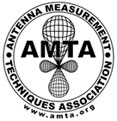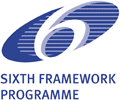| |
Platinum Sponsors |
|
| |
 |
| |
Gold Sponsors |
|
| |
|
| |
Silver Sponsor |
 |
| |
Bronze Sponsor |
|
| |
|
|
|
Associated societies
|
The ACE Network is a Network of excellence in the European 6th framework IST. It will structure the fragmented European antenna R&D, reduce duplications and boost excellence and competitiveness in key areas. ACE deals with the antenna function of radio systems. This includes the electromagnetic interface from conductors to free space radiated waves, the beam-forming functions, whether they are analogue or digital, and adaptive "smart" systems to optimize performance.
The project has a duration of four years, with start 1 January 2004. It has 51 participants from 17 European countries. 323 researchers and 130 PhD students are involved. The ACE total budget is 13.534.000 €, with EC Contribution up to 10.500.000 €.
|
|
 |
The Antenna Measurement Techniques Association (AMTA) was formed in 1979 in the US as a non-profit professional organization, open to individuals with an interest in antenna measurements. Areas of interest include: measurement facilities, unique or innovative measurement techniques, test instrumentation and systems, RCS measurements, compact range design and evaluation, near-field techniques and their applications, and the practical aspects of measurement problems and their solutions. Members come from a variety of backgrounds, including industry, government, and educational institutions, and from many countries in the world. The primary activity of AMTA is the five-day annual symposium usually held in mid October to early November of each year. Tours of local measurement facilities are arranged and are generally conducted the last day of the symposium. Each year approximately 80 to 100 papers are presented at the symposium which also includes an exhibition on antenna related hardware, software, measurement systems, and services. For additional information on joining AMTA, please contact the AMTA Secretary, Jeff Guerrieri at secretary@amta.org
|
|
 |
As the name indicates FP6 is the frame for the EU activities in the field of science, research and innovation. With a budget of 17.5 billion euros for the years 2002 - 2006 it represents about 4 to 5 percent of the overall expenditure on RTD in EU Member States. The main objective of FP6 is to contribute to the creation of the European Research Area (ERA) by improving integration and co-ordination of research in Europe which is so far largely fragmented. At the same time research will be targeted at strengthening the competitiveness of the European economy, solving major societal questions and supporting the formulation and implementation of other EU policies. Activities under FP6 have to be conducted in compliance with ethical principles, including those reflected in the Charter of Fundamental Rights of the European Union. Furthermore they should strive both to increase the role of women in research and to improve information for, and dialogue with, society.
|
|


|
The IEEE Antennas and Propagation Society (AP-S) is one of the technical Societies of the Institute of Electrical and Electronics Engineers, the world’s largest professional association for the advancement of technology. The Society’s field of interest includes the following: antennas, including analysis, design, development, measurement, and testing; radiation, propagation, and the interaction of electromagnetic waves with discrete and continuous media; and applications and systems pertinent to antennas, propagation, and sensing, such as applied optics, millimeter-and sub-millimeter-wave techniques, antenna signal processing and control, radio astronomy, and terrestrial and space-based communication, including wireless, mobile, satellite, and telecommunication. The Society publishes the IEEE Transactions on Antennas and Propagation, the online journal IEEE Antennas and Wireless Propagation Letters, and the IEEE Antennas and Propagation Magazine; organizes the annual IEEE International Symposium on Antennas and Propagation; has over 70 Chapters worldwide; and technically co-sponsors numerous meetings within its field of interest around the world. The Society Web site is located at http://www.ieeeaps.org.
|
|
|
COST IC0603 “Antenna Systems & Sensors for Information Technologies (ASSIST)” is the eighth European COST action on antennas. These “projects” have since 1973 created a unique forum for technical exchange in the field of antennas in Europe.
The main objectives of COST IC0603 are:
- To assist in the research & development of antenna systems and sensors necessary for the new ubiquitous wireless society:
- coordinate existing research
- suggest new topics
- stand in a scientific/technological survey attitude
- To contribute to the visibility of antenna activities in Europe and to lobby for new projects by:
- creation of a European antenna community
- conferences and workshops
- exchange of researchers
- interactions academy-industry
- To increase public awareness of antenna related issues.
The COST IC0603 website is located at http://www.cost-ic0603.org/
|
|
 |
The Information Technology Society within the VDE (ITG) was founded in 1954 by the VDE. Its main tasks are to promote the research, development and application of information technology, to initiate the exchange of knowledge between universities, manufacturers and users of information technology, to protect the professional interests of the engineers and scientists who work with information technology and to provide a public discussion forum for these technologies.
The ITG’s work covers both the technical-scientific field of development and production and also the transfer of technology knowledge – a role which is increasing in importance and relevance. The society‘s ambit also includes monitoring education, training and the job market and, not least, public relations work. The ITG organises national conferences, seminars and workshops. It publishes and edits the „Nachrichtentechnische Zeitschrift“ and, in conjunction with the GMM, the technical journal F + M Mechatronic, the it-Information technology, the ETT - European Transactions on Telecommunications and Related Technologies, the AEÜ International Journal of Electronics and Communication and presents awards for scientific achievements and outstanding publications.
The ITG currently has 11,000 members. The specialised activities are carried out in 9 specialist divisions with about 40 technical committees and 60 workgroups
The specialist fields are:
- Information Society and Focus Projects
- Services and Applications
- Television, Movies and Electronic Media
- Audio Communication
- Communication Systems
- Technical Informatics
- High Frequency Technologies
- Nano- and Microelectronics
- Shared Concepts and Components
|
|
|
Société de l'Electricité, de l'Electronique
et des technologies de l'information et la communication
Professional society
Objectives
With its predecessor created in 1883, the Société de l’Electricité, de l’Electronique et des Technologies de l’Information et la Communication nowadays mission is to promote developments in technology, broaden knowledge and teaching in the fields of electrical engineering and information sciences and technologies, as well as encourage professional networking between members.
Scientific and Technological Fields
From physics (waves, lightning) to system applications (aerospace, security, ground transportation) across methodology (automatic control, software engineering, signal and information processing) and technologies (electronic and optical components, radars, communications, power generation and equipments): 18 specialist's committees overall.
Local networks
12 regional chapters organised across the whole of France, and connection to similar French-speaking and other societies abroad.
Means
- Communication organised within various engineering and scientific networks with access for the members to a monthly newsletter
- Organisation of professional events including local and national workshops, colloquia, conferences, up to major international congress
- Publication of conference proceedings, the SEE scientific printed journals: Revue de l’Electricité et de l’Electronique (REE), Revue Enseigner l’Electrotechnique et l’Electronique Industrielle (3 E.I.), and the e-journal of automatic control E-sta.
- Recognition of members' achievements through degrees and awards.
|
|
 |
Loughborough University has an international reputation for excellence in teaching and research, strong links with industry, and unrivalled sporting achievement.
In 2006 full-time students voted Loughborough one of their top five universities in the new National Student Survey, and recently published league tables place Loughborough in the top six universities in the UK, confirming it as one of the country’s leading higher education institutions.
Loughborough is research-intensive. Its ethos from its earliest days has been to produce highly relevant research that solves real world problems to assist both business and industry, and improve people's quality of life. Nearly half of the University's income is for research, and its research partnerships and links with business and industry are the envy of other institutions.
|
|
 |
The European Space Agency is Europe’s gateway to space. Its mission is to shape the development of Europe’s space capability and ensure that investment in space continues to deliver benefits to the citizens of Europe.
ESA has 17 Member States. By coordinating the financial and intellectual resources of its members, it can undertake programmes and activities far beyond the scope of any single European country.
|
|
 |
Radio science encompasses the knowledge and study of all aspects of electromagnetic fields and waves. The International Union of Radio Science (Union Radio-Scientifique Internationale), a non-governmental and non-profit organisation under the International Council for Science, is responsible for stimulating and co-ordinating, on an international basis, studies, research, applications, scientific exchange, and communication in the fields of radio science. Included within the objectives are the following:
- to encourage and promote international activity in radio science and its applications, for the benefit of humanity
- to encourage the adoption of common methods of measurement, and the intercomparison and standardisation of the measuring instruments used in scientific work
- to stimulate and co-ordinate studies of:
- the scientific aspects of telecommunications using electromagnetic waves, guided and unguided; - the generation, emission, radiation, propagation, reception, and detection of fields and waves, and the processing of the signals embedded in them.
- to represent radio science to the general public, and to public and private organisations.
|
|
|
The Institution of Engineering and Technology support a number of Technical and Professional Networks.
The Antennas and Propagation Technical and Professional Network is focused on providing its community of members with up to date sector news via a weekly newsletter and specific network website and the opportunity to gain knowledge, collaborate and network with colleagues from industry and academia throughout the UK and Europe through its annual event programme.
Through these activities the network covers all aspects of theory, design and modelling of antenna systems and associated components, in addition to theoretical and wave experimental studies of electromagnetic wave propagation at any frequency.
|
|
|
The RF & Microwave Technical and Professional Network covers the area of RF, microwave and millimetre-wave circuits and subsystems, alongside the design and analysis of integrated circuits and systems.
The network provides its members with annual educational, training and networking events, alongside providing up to date industry news via its dedicated website and weekly newsletter
|
| Forthcoming event:
CEM 2008
Seventh International Conference on Computation in Electromagnetics
Join us for CEM 2008, which will provide a forum for the presentation and discussion of research into computational techniques for solving problems in Electromagnetics, aspects and applications of numerical modelling based on these techniques.
www.theiet.org/cem
|
|
|
The Radar Sonar and Navigation Technical Professional Network aims to provide the first point of contact in the UK for professional information and advice in the field of Radar, Sonar and Navigation. The main aim of the TPN is to:
- Arrange an ongoing programme of technical events that will enrich the professional background of those attending;
- Develop a structure of an online editorial on the website and continuously strive to enrich knowledge and content for the benefit of the community;
- Strive to forge international links and co-sponsor increasing number of events.
|
|
|
News: |
|
|
Organised by: |
|
|
Supported by: |
|
|
|
|
|
|
|
|
|
|
|
|
|

